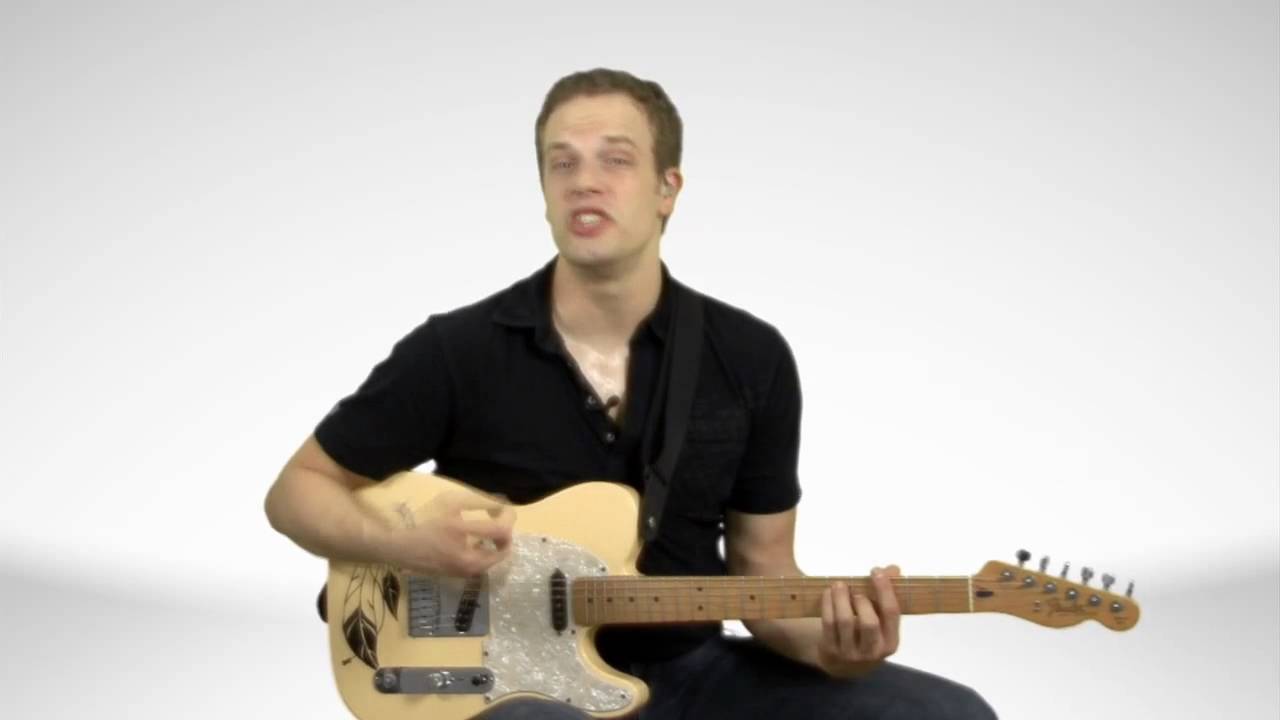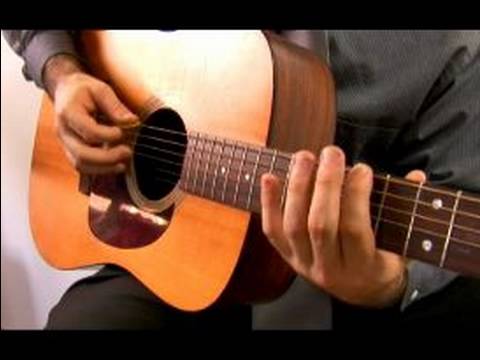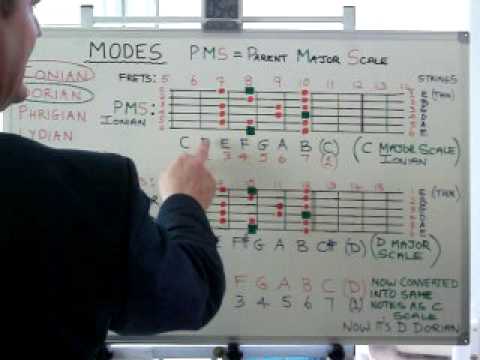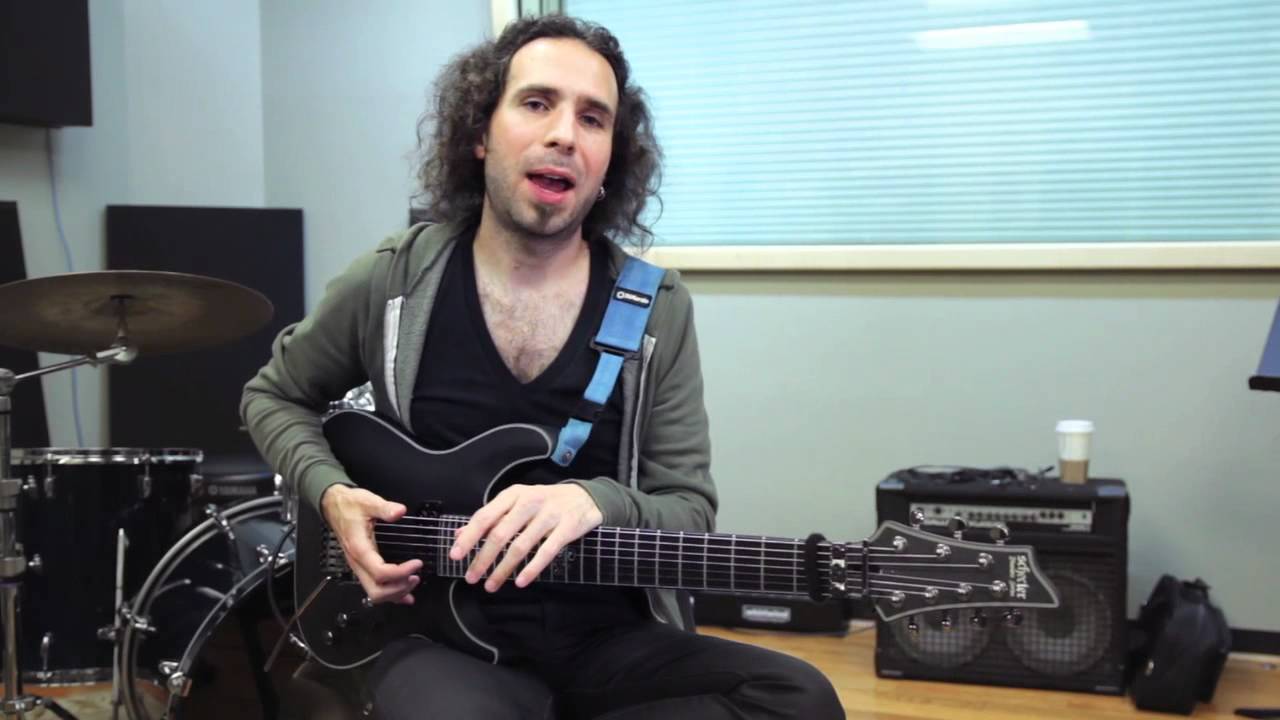Andrew answers this week’s question about how to memorize scale degrees and modal ideas… 1). What, if any, is a logical, expeditious way of memorizing scales and their degrees for both soloing and playing chord progressions. 2). How do modes work with chord progressions? 3). How can you mix modes with scales to create interesting improvisations over progressions? – Christian ANDREW’s MODES BOOK: www.andrewwasson.com Official Website: www.andrewwasson.com Follow Andrew on Blogspot creativeguitarstudio.blogspot.com Follow on Twitter: twitter.com MySpace: www.myspace.com Facebook: www.facebook.com Video Rating: 4 / 5
You may also like
Introduction To Guitar Modes – Guitar Lesson
Added by Admin 10 years ago
745 Views1 Comments0 Likes
Get instant access to FREE guitar lessons at GuitarLessons.com . Learn how to play the 7 guitar modes in these guitar lessons! This section will run through all seven guitar modes and show a...
Modes & Guitar Solo Techniques: Music Lessons : Playing the Seven Guitar Modes in E Major
Added by Admin 10 years ago
559 Views0 Comments0 Likes
Learn how to play the seven 7 musical guitar modes in the key of E major in this free music lesson on video. Expert: Casey Cormier Bio: Casey Cormier has been playing both the guitar and bass for 10 years. Filmmak...
What Are Modes, How Are They Made, And Why? Easy Lesson Explaining A Complex Subject
Added by Admin 10 years ago
3.49K Views25 Comments0 Likes
What Are Modes, How Are They Made, And Why? Easy Lesson Explaining A Complex Subject. The subject of Modes can drive fear into the most seasoned of Guitarists & musicians but, it need not be...
German Schauss Guitar Quick Tip – “Using Modes on Guitar”
Added by Admin 10 years ago
902 Views1 Comments0 Likes
LAMA Guitar Instructor German Schauss discusses using different modes on guitar. www.lama.edu Video Rating: 4 / 5









Its never too late to learn, all this information does is help you communicate musically in a more accurate fashion . It helps to learn these things though, starting with the major scale. Cause the modes are really major scales, just with different roots.
Its pretty simple once you get around to applying it first, try learning these modes in the Key of C first, if you can apply them in that key, you can pretty much figure it out for the other keys. Hope that helps
sorry dorian 6th, but you get what i mean?E to E would be phrygian. no sharps no flats.
then why do they say d to d is dorian, i thought dorian has flats ? how do you explain that?
andrew is just a complete boss, such helpful videos, many thanks
So what happends to the modes when in a different key? Do the shaps stay still? How do you incorperate the modes if you were playing Dm pentatonic scale? E.g. If I was playing Em how do I play E dorian is that such a thing? Please reply. Sorry if my questions are a bit confusing.
Great videos dude!
You’re doing a good job explaining I’m understanding it so far, but I want to make sure my understanding is right. So, modes are basically within scales and are determined by the note you play first within the scale? Does this mean that every scale has a certain set of modes? Do all scales have the same modes? Also, if I were soloing over an A major chord, does this mean I would be able to use the different modes within the A major scale, and each would have it’s own unique sound? Thanks
First, learn how to spell.
It’s pretty sad that I’ve been playing over 10 years and could barely understand any of this lesson.. I’m starting to realize how much I still have to learn. It’s pretty overwhelming….
can u plzz explain d basics of modes..?? n how to use it ??? and can u tell me how to initiate using modes , what shud b d first step ??
I wish I knew what the hell you’re talking about.
A great explanation, thank you
Coming from piano, I highly recommend guitar players who struggle with scales/modes to study scales on a keyboard.
DUDE! Dude! dude! dude. dude…. You’re amazing man.
Even though I have trouble understanding the particulars and such of guitar/music theory, I do understand much more than I used to.
Enjoyed the video.
Newborn George Frideric Handel?
4 people will never learn how to play the guitar.
nice lesson! i need to take this more deeper..
i need to take this more deeper.. 
your teaching is very organized..really helped a lot.i am looking for it for a long time.thnx.
your a smart fucker !
when he says flat 3 or flat 6 it is relative to the major scale… so for example the the third note in a minor scale (for example: C in an A minor scale) is the flat version the third note in the major scale (in this case, C flat, or B)
i hope this helps
Jesus, I wish I could understand the whole 1 2 flat 3 4 5 6 flat and what not… It confuses the hell out of me.
ANDREW=MY HERO
Thanks for the lessons Andrew, you are very generous with your time and knowledge. You ROCK BRUTHA!!!!! btw great explanation on the differences between Satch and Coldplay!!!
hey… your awesome dude!……your lessons Really helps alot..^_^ I wish Were Just Neighbors so That You Can Teach me All The Time…xD
.hey can you make a lesson about how to build up a shred in any major/minor chords?… thanks andrew.^_^
your a Great Teacher!..keep it up!..GOD SPEED..